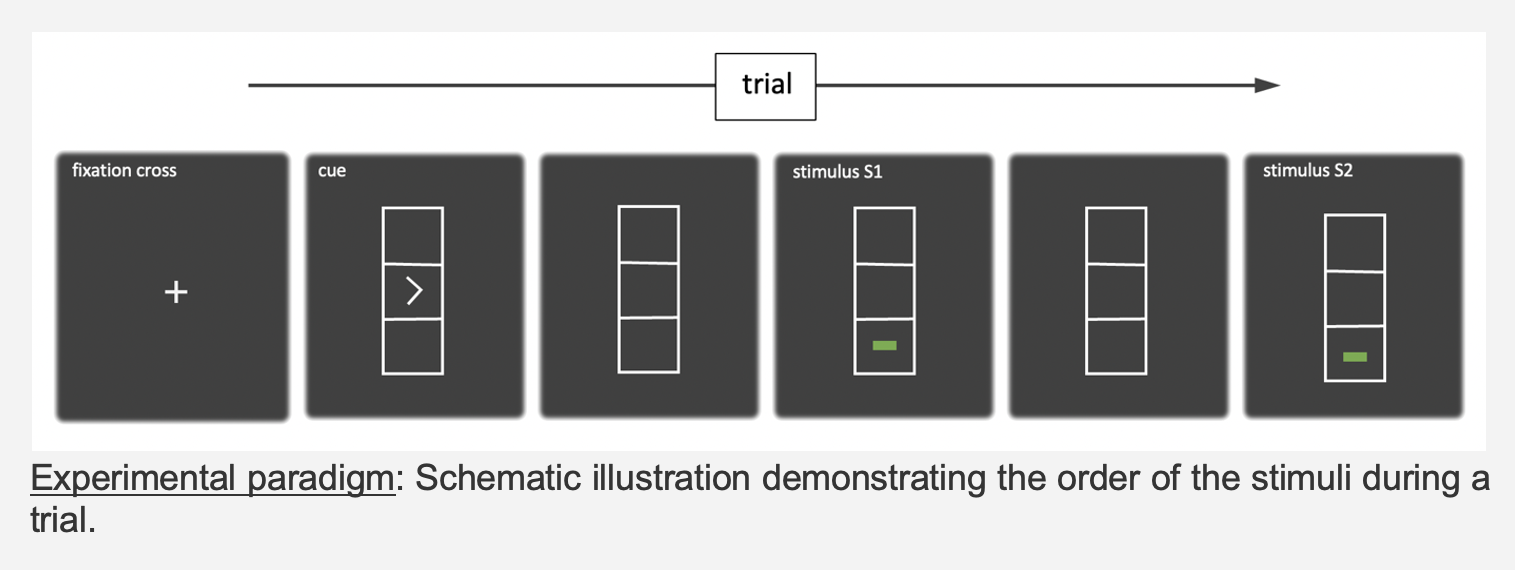Objective: To analyze cognitive processes engaged in linking and restructuring sensory perception and motor action associations in functional movement disorders (FMD).
Background: FMD patients demonstrate increased, misdirected attention towards their abnormal movements and altered sensory information processing [1,2]. It is unknown whether cognitive processes engaged in linking and restructuring of perception-action associations are relevant for the understanding of FMD [3].
Method: We investigated 21 patients diagnosed with FMD (14 female, 16-68 years, mean age 38.7 years) and 21 age- and sex-matched healthy controls (HC, 14 female, 16-58 years, mean age 40.1 years). Patients presented functional motor symptoms such as gait disturbances (n=15), functional tremor (n=9), functional tic-like movements (n=5) and functional twitching (n=1).
Perception-action binding was investigated using an established paradigm [4], which assesses the effect of experimentally induced, transient associations (“binding”) between visual stimuli and motor responses on subsequent stimulus-based responses. Stimulus-based responses can be compatible or incompatible with the previously induced binding, with incompatibility resulting in “rebinding costs”, manifesting behaviorally as lower accuracy and longer response times (RT).
[figure1]
Results: Both groups showed significant binding effects in their accuracy (p<0.001) and RT (p<0.001), reflected in better performances in compatible than in incompatible conditions. Numerically, binding effects were higher in patients with FMD than in HC, but these effects were not statistically significant. Patients and HC differed regarding accuracy (p=0.042), with patients showing significantly lower accuracy than HC.
Conclusion: Our data suggests that patients with FMD exhibit difficulties in the reconfiguration of previously linked perception-action processes comparable to HC. However, no significantly stronger binding effects compared to HC were detected.
References: 1 Pareés, I. et al. (2013) Failure of explicit movement control in patients with functional motor symptoms. Mov Disord 28, 517–523
2 Sadnicka, A. et al. (2020) Reduced drift rate: a biomarker of impaired information processing in functional movement disorders. Brain 143, 674–683
3 Drane, D.L. et al. (2021) A framework for understanding the pathophysiology of functional neurological disorder. CNS Spectr. 26, 555–561
4 Hommel, B. (1998) Event Files: Evidence for Automatic Integration of Stimulus-Response Episodes. Visual Cognition 5, 183–216
To cite this abstract in AMA style:
J. Moyé, F. Chwolka, T. Paulus, S. Zittel, J. Verrel, T. Bäumer, A. Münchau, A. Weissbach. Perception-action binding in patients with functional movement disorders [abstract]. Mov Disord. 2022; 37 (suppl 2). https://www.mdsabstracts.org/abstract/perception-action-binding-in-patients-with-functional-movement-disorders/. Accessed December 26, 2025.« Back to 2022 International Congress
MDS Abstracts - https://www.mdsabstracts.org/abstract/perception-action-binding-in-patients-with-functional-movement-disorders/

